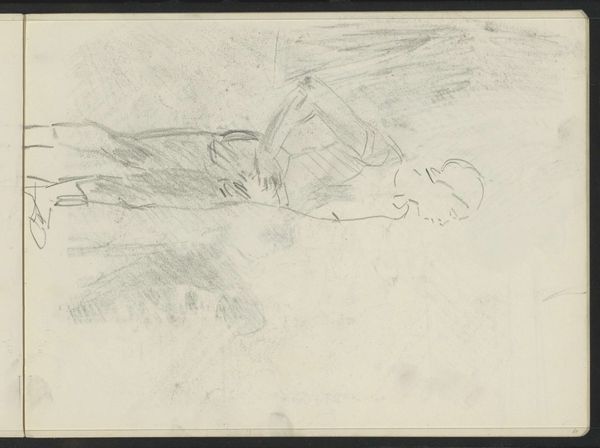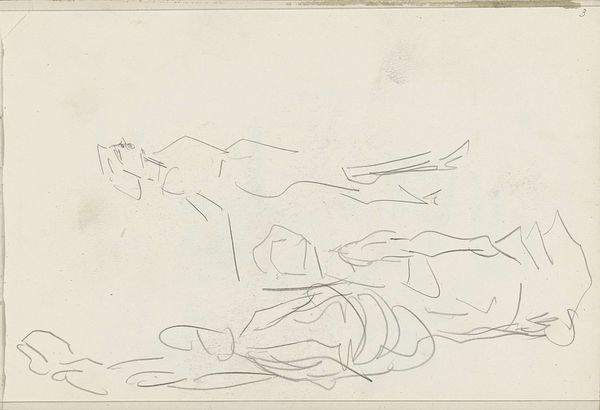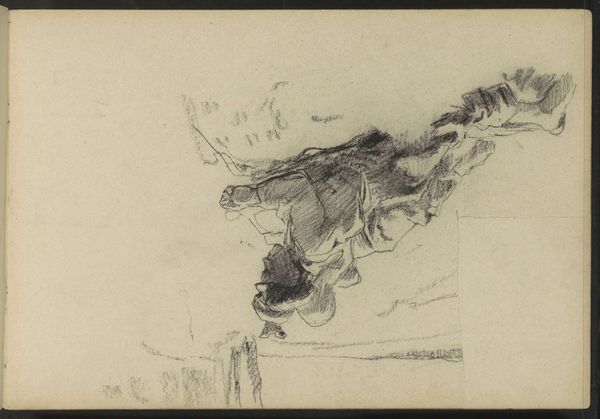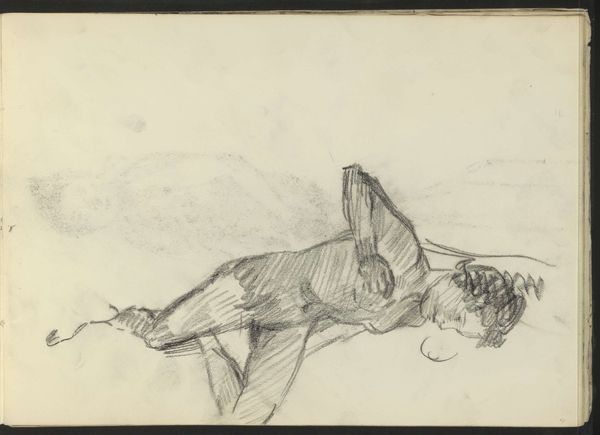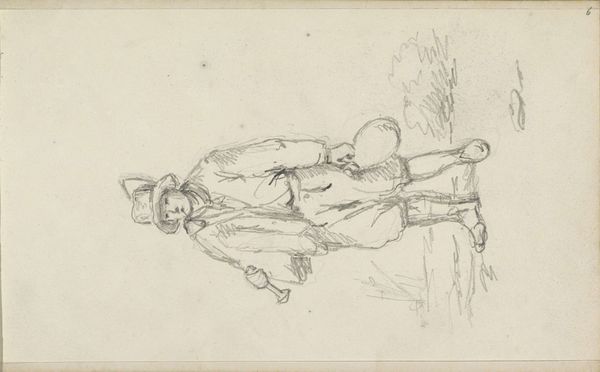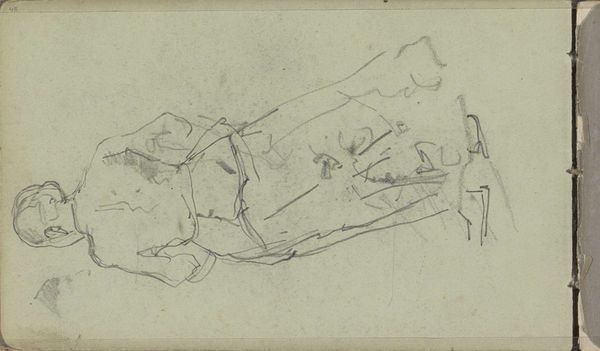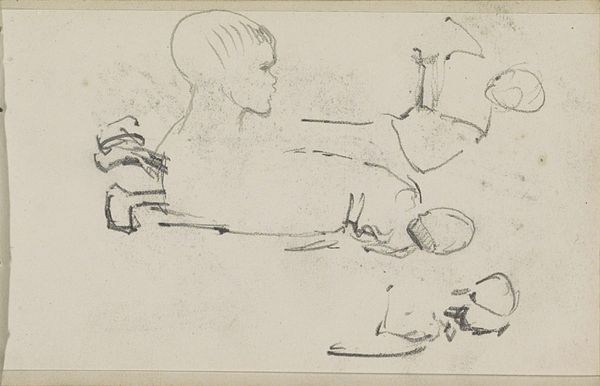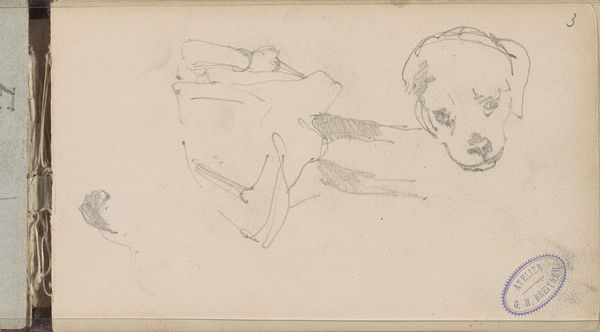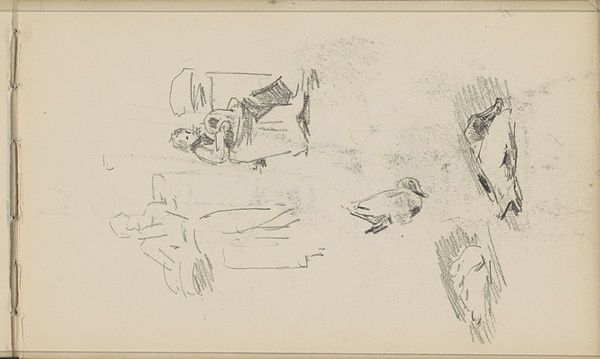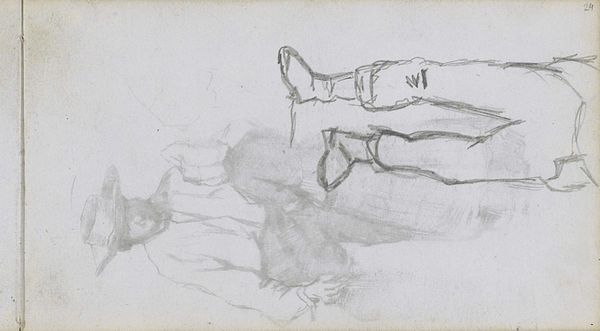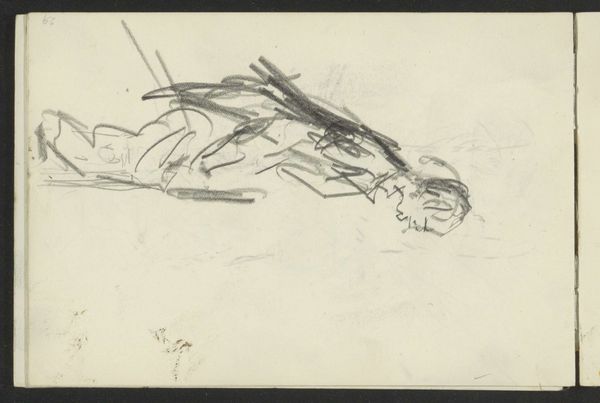
drawing, pencil
#
drawing
#
light pencil work
#
impressionism
#
incomplete sketchy
#
figuration
#
personal sketchbook
#
idea generation sketch
#
sketchwork
#
ink drawing experimentation
#
pen-ink sketch
#
pencil
#
sketchbook drawing
#
academic-art
#
sketchbook art
#
realism
#
initial sketch
Copyright: Rijks Museum: Open Domain
Curator: This is a page from George Hendrik Breitner's sketchbook, titled "Figuurstudies," dating from around 1880 to 1882. It's a pencil drawing, currently held in the Rijksmuseum. What strikes you first about it? Editor: A certain fragility, I think. It's fleeting, as though these figures are just emerging from a dream, or perhaps being erased. Curator: Exactly. Consider that this work gives insight into Breitner’s process. He would use these rapid sketches, almost like notations, to understand movement and form. We see the pencil strokes, the layering, the corrections. It's all about the physical act of capturing something ephemeral. Think of the cost of materials at the time and access. Sketchbooks were treasured. Editor: And those forms he's capturing carry the weight of history. Note the clothing— suggestions of military bearing or formal wear. These are figures conscious of their social roles. They present a carefully constructed image of themselves. It makes you wonder about the stories they hold within. The sketchy nature speaks of how he captures people fast moving through the modernizing streets. Curator: Yes, but it's also about the craft of seeing. Breitner, with his emphasis on materiality and documentation through photography and drawings, documents a reality, a moment in time and the changes to Amsterdam. It brings a certain kind of knowledge to making visible that modernity and industrialization changed social behaviours. Editor: Yet, they’re incomplete, these images are potent. The quick, unfinished lines feel like a memory surfacing. Those sparse pencil lines act as symbols, markers that recall a cultural consciousness from this Dutch milieu in the late 19th century, hinting at a much bigger narrative. I wonder what the symbolism might be to our audience of what a soldier represents? Curator: Fascinating to see how these “initial sketches” speak in various ways to each of our points of view and fields of expertise. It also shows how important process is and not to only look at finished art. Editor: Indeed. It enriches our understanding, doesn't it, allowing the resonance of an art, time, and its imagery and symbolism, to echo long after the initial viewing.
Comments
No comments
Be the first to comment and join the conversation on the ultimate creative platform.
